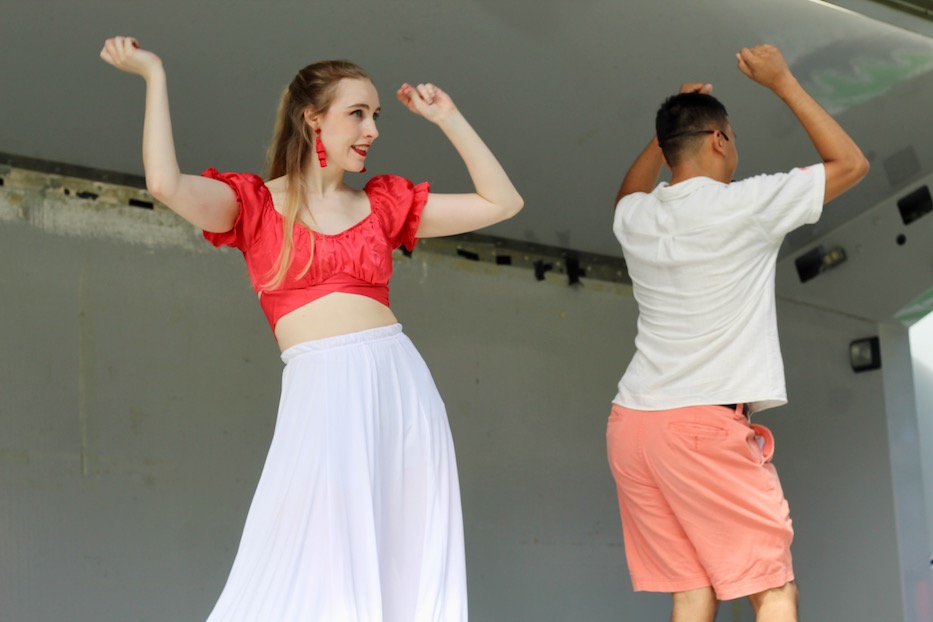
Culture & Community | Dance | International Festival of Arts & Ideas | Music | Arts & Culture | New Haven Green
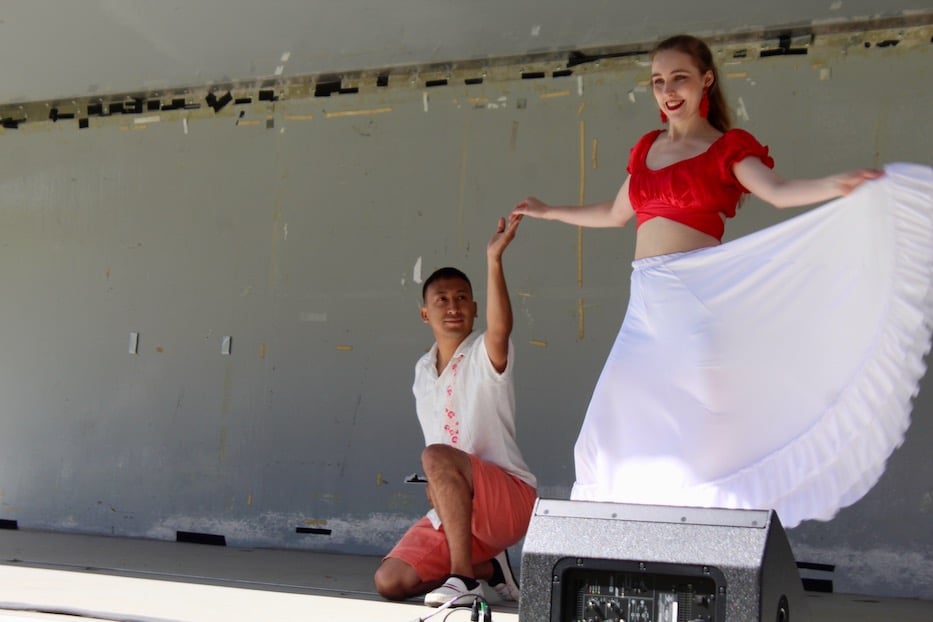
Jason Ramos and Amanda Duvall of Baila Con Gusto CT. Lucy Gellman Photos.
Jason Ramos and Amanda Duvall raised their arms above their heads, fingers dancing in the afternoon sunshine. As they came down, they stepped forward to the beat, sinking right into deep, jubilant vocals. Ramos swayed at the hips. “Let’s try a right turn!” he exclaimed. “Fly away! Reach for the sun!”
The lesson came as part of Rhythm Exchange, a biweekly program of the International Festival of Arts & Ideas that brings dancers, musicians, storytellers and other performing artists to the New Haven Green every other Thursday in an effort to activate the space. Thursday afternoon, it included performances from rhythm tap dancer Alexis Robbins and Baila Con Gusto’s Ramos and Duvall, who are partners in both life and work. Rhyon Christie and Edward Mathews, both eighth grade students at Betsy Ross Arts Magnet School (BRAMS), introduced the event.
The program continues next week with hip-hop artists Tang Sauce, Alyssa Hughes, Candyce “Marsh” John and DJ Dooley-O; features a New Orleans second line at the end of the month, and concludes with a Day of the Dead observance on Nov. 3.
“It feel significant to be out here this month,” said Ramos, who is Ecuadorian but teaches dance styles from Cuba, the Dominican Republic, Argentina, and elsewhere in Latin America. “It feels nice to represent a multiplicity of things. I try to share what I know.”
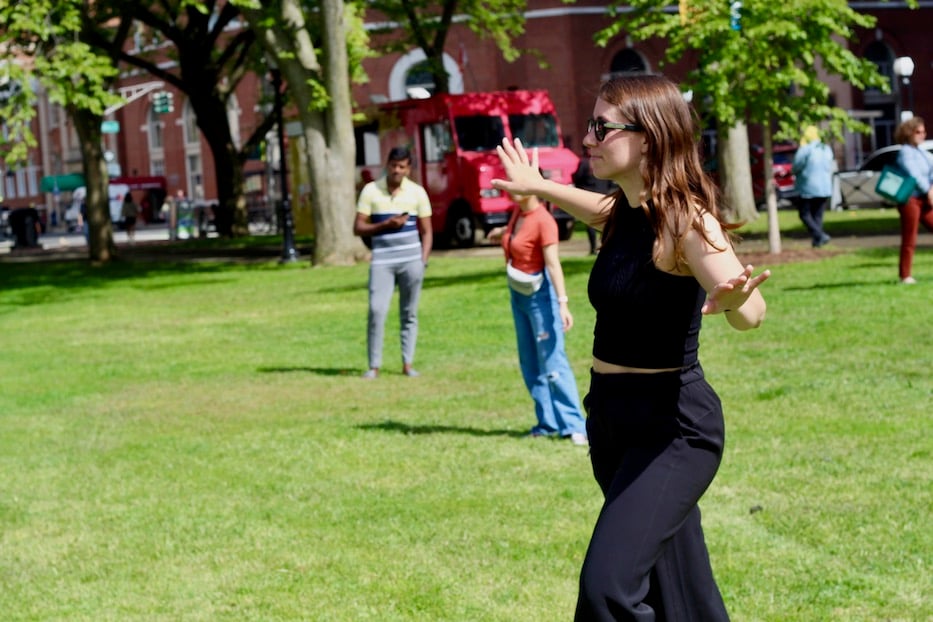
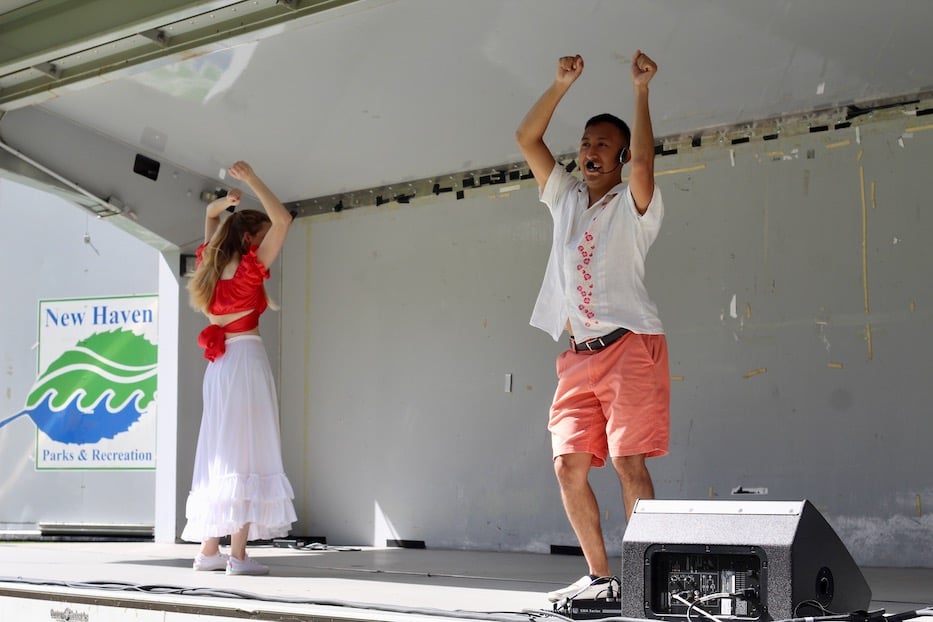
Top: Robbins in the audience (a full video of her performing is below). Bottom: Duvall and Ramos. Lucy Gellman Photos.
As both Robbins and Baila Con Gusto took the stage Thursday, they transformed it into a platform for living history. Dancing to a Thelonious Monk inspired take on Duke Ellington’s “Caravan,” Robbins began cautiously, letting Jamie Berlyn do most of the talking on sax. Berlyn leaned in toward the audience and the instrument bellowed, its voice hanging low in the air. From Clifford Schloss, a lush, close-to-languishing carpet of guitar came in underneath it.
Robbins listened for her opening, a foot slowly tracing the circumference of a perfect circle. Her toe whispered along the board, and something changed. Berlyn sank into the jazz standard, decades of music working their way through the sax. Schloss sped up. As Robbins’ arms flew out, her feet became the percussion section, chatty as they hit every beat. This was not the tappety-tap-tap-woah! of Broadway tap but something much more powerful, with the same fire and pacing of Max Roach, Art Blakey, Jimmy Cobb.
And indeed as they fluttered, flew, and made hard contact with her board, her teal tap shoes tied her to a history of struggle and resilience, from the centuries-old roots of juba to the ongoing appropriation and whitewashing of the form and its practitioners. If a listener closed their eyes, they could imagine those feet finding their way around a drum kit, the taps reaching for a pair of sticks, leaning into the cymbal.
By the time the group reached John Coltrane’s “Equinox,” the crowd was spellbound. Around the Green, the occasional Yessss! and That’s right! floated through the air, but attendees more often watched in stunned, reverent silence, remembering their hands and snapping fingers just before bursting into applause. As she caught her breath between numbers, Robbins both thanked attendees and invited them to dance alongside her, in weekly lessons she now offers at her home in Hamden.
“I felt like we were cohesive,” she said after performing, as she slid her shoes into large, pink covers to protect them from the grass and mud. “We really listened to each other. It’s so rare that I am miced appropriately, and I felt heard.”
For Ramos, who was born in Brooklyn and grew up in Meriden, the sun-soaked afternoon also marked a chance to share the complexity of a culture, and the sheer breadth of a diaspora. As a kid growing up in Connecticut, Ramos was initially surrounded by the Ecuadorian traditions of his parents, rather than the rhythms of salsa, bachata, and merengue that are now second nature. That changed when he was he was a teenager, and discovered an organization for dance awareness at Central Connecticut State University. 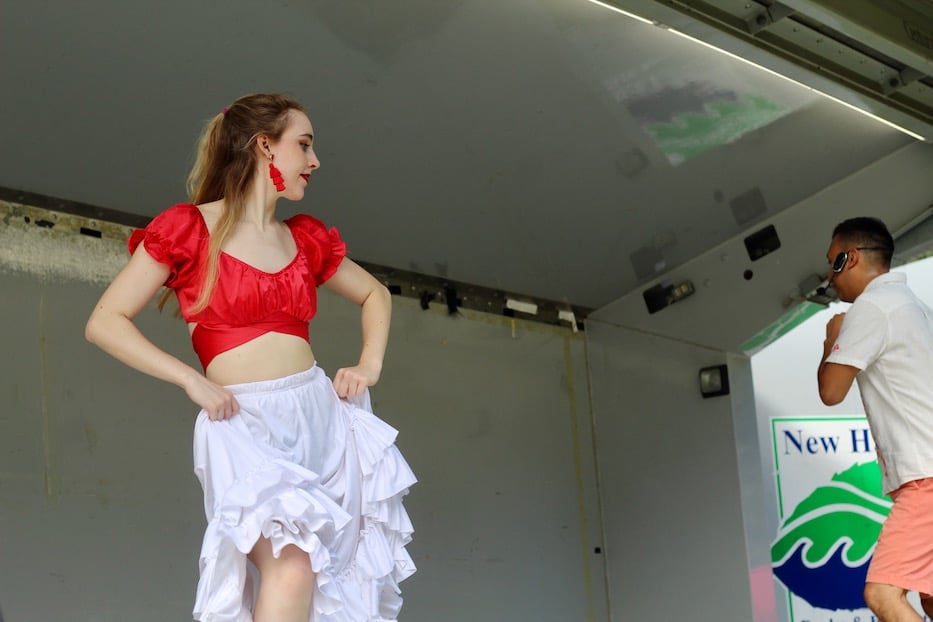
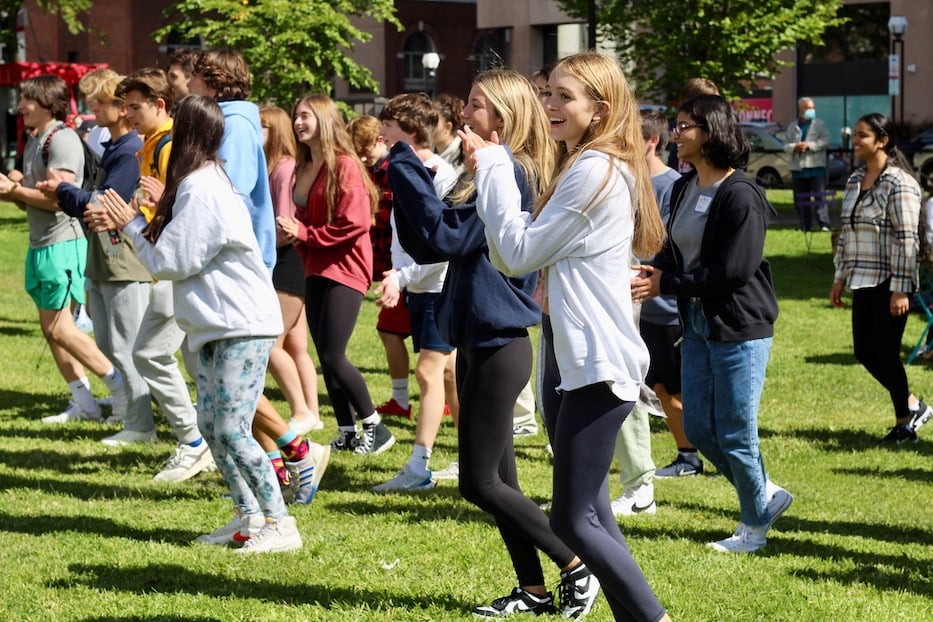
When he started dancing seriously in college, Ramos noticed that salsa classes were fairly easy to come by, and common in New Haven and Hartford. By contrast, people thought bachata was “simple,” he said. He has since championed the art form, teaching it alongside salsa and merengue in his weekly classes at the Church of St. Paul and St. James and in performances with Duvall across the state.
Thursday, he was excited to bring it to the heart of New Haven with Duvall by his side, he said. Looking out over the audience, he asked if anyone knew where bachata came from. When the Green remained quiet, he dipped into the dance’s history, tracing it back to the 1960s in the Dominican Republic. While its origins may be on the small Caribbean island, it takes its cues from merengue, Son Cubano, West African dance, and the painful history of the Afro-Caribbean slave trade.
That mix means “there’s a lot of blues, a lot of flavor,” Ramos told the audience before moving into a version of “Stand By Me”' that slipped from English to Spanish and back again. As he stepped into a turn, the sound of segunda and güira soared across the grass, tinny as the dancers melted into vocals. As she spun, Duvall demonstrated the same movements from the front, so that audience members could watch.
“If you’re feeling yourself”—Ramos and Duvall ran their hands up and down their legs, chests, and shoulders. They pulled their fingers through their hair. “And up! And then down! Again! Boom!”
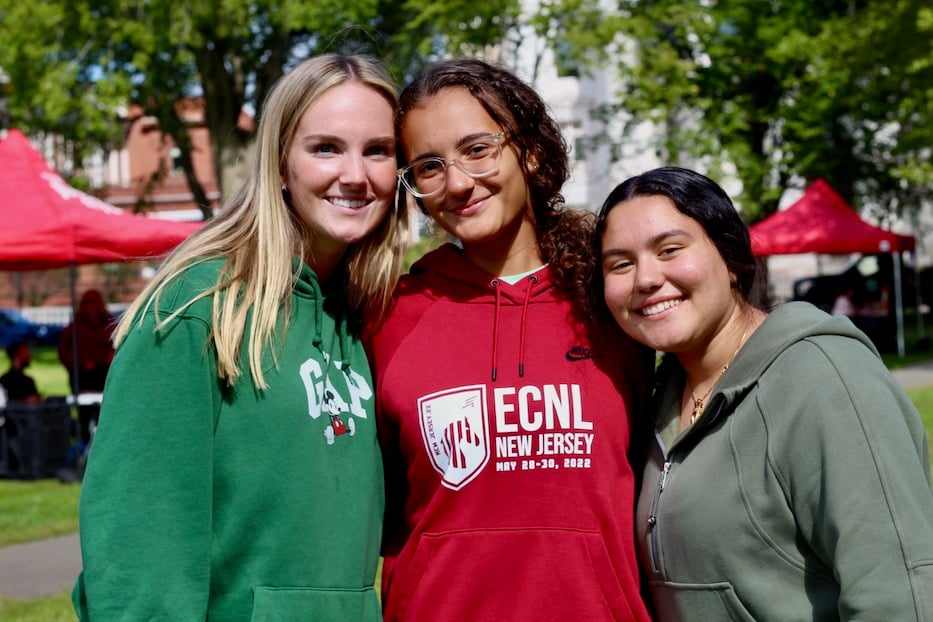
Hailey Casey, Demi Nicole and Demiana Santana. Lucy Gellman Photos.
A cheer rose up from the grass in front of them. Arranging themselves in neat rows, students from Jonathan Law and Joseph A. Foran High Schools in Milford mastered the dance, squealing in unison at every new step. They stepped forward cautiously, then sank into it, comfortable as their knees took on the new weight. As they moved, Robbins jogged from an artists’ tent to watch and started moving in time with the music.
“One-two-three-four,” Ramos said as Duvall lifted her white skirt to reveal her fast-moving feet. “Basic step! Let’s try a turn—turn this way! ¡Eso! You guys learn quick!”
“Let’s do the hips!” he said as students laughed their way through the steps. “Now let’s take our arms. I’m gonna take my arm, I’m gonna scoop it, and go over my head—” a roar rose from the group—“nice and smooth! Scoop! Again! Scoop! Like you’re combing. In Spanish, this is peñar. Peñar el pelo. Combing the hair.”
At both Milford high schools, students in both Spanish V honors and AP Spanish have been learning about the dance form and its history, said teacher Margaret Morazzini. As they mastered the steps on the Green, Spanish V students Demi Nicole, Hailey Casey and Demiana Santana all said that the trip over had been well worth it. It seemed as though they could stay for hours, dancing away the afternoon.
“It’s fun to just learn about another culture,” Santana said.
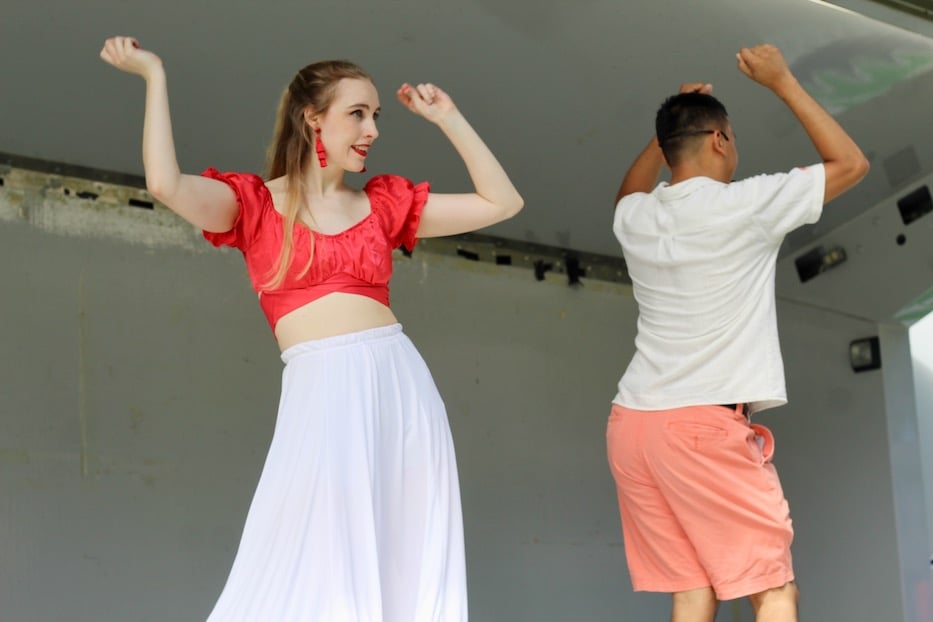
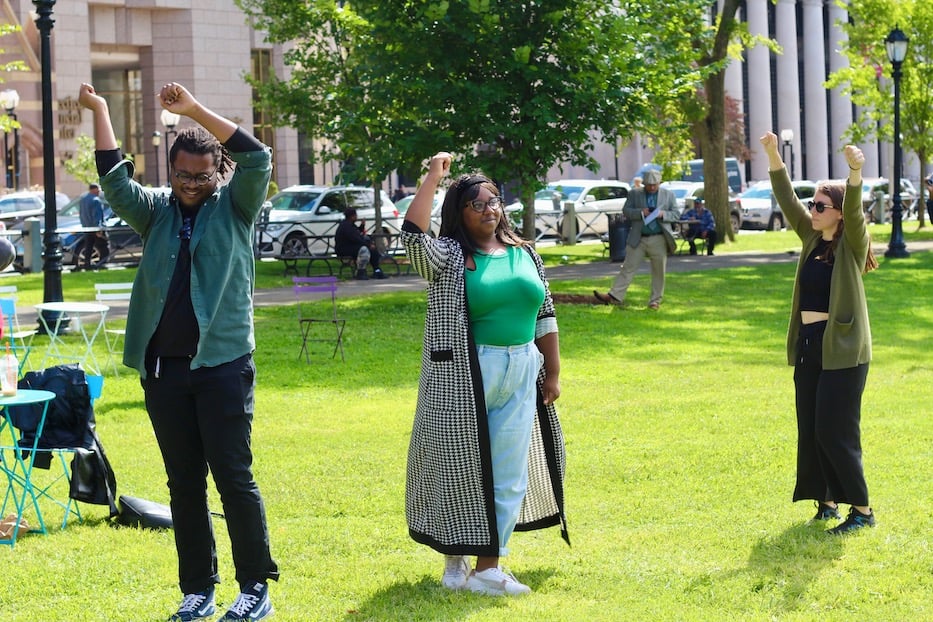
Top: The Baila Con Gusto duo. Bottom: Clifford Schloss, Briana Williams and Alexis Robbins.
“¡Eso!” Ramos cried from the stage, and applause exploded from the group gathered on the Green. When they headed toward their buses before learning the ins and outs of merengue, some students looked as though they might pause, and stay for just a little bit longer. As the space in front of the stage emptied out, a handful of bachata faithfuls kept on moving to the neat-constant music.
They included Jen Chen, who mastered the steps as she finished her lunch from a nearby food truck and prepared to head further East. A Boston resident, she was “just driving through the city” when she heard the music—and spotted a food truck—and stopped to see what was happening. She was delighted, she said: she started studying salsa and bachata five years ago, but put dance on the back burner when the pandemic hit. The afternoon reminded her of what she’d been missing.
Back on stage, Ramos described merengue as the much older precursor to bachata, and a cultural response to colonialism, occupation and resistance that emerged in the 19th century. During that time Ramos said, merengue became the music of the people, beloved as a dance that belonged to the campesinos—the poor, rural masses in the Dominican Republic. That’s woven into the music, he added: when German military forces tried to keep the accordion to themselves, rural populations taught themselves the instrument.
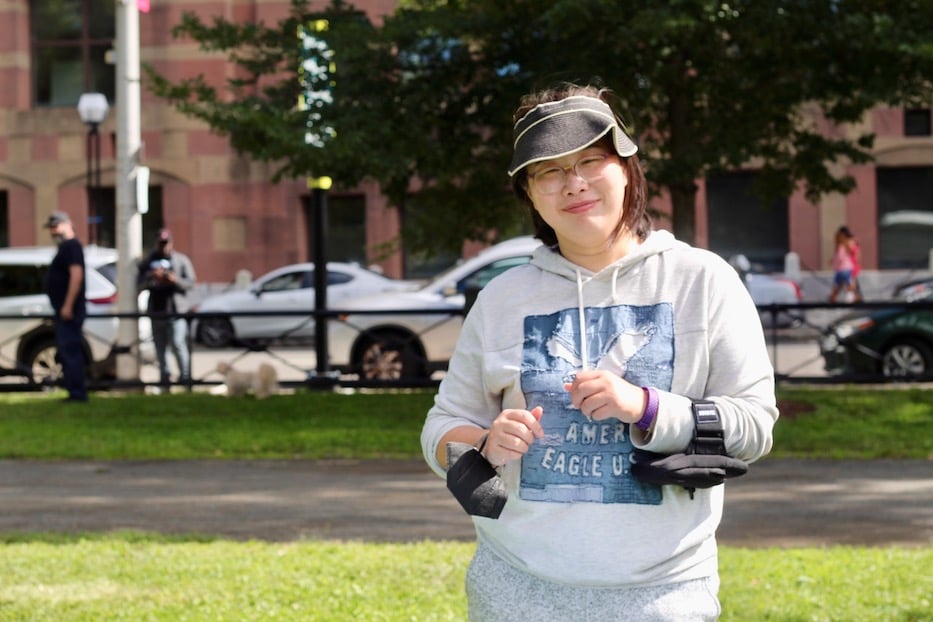
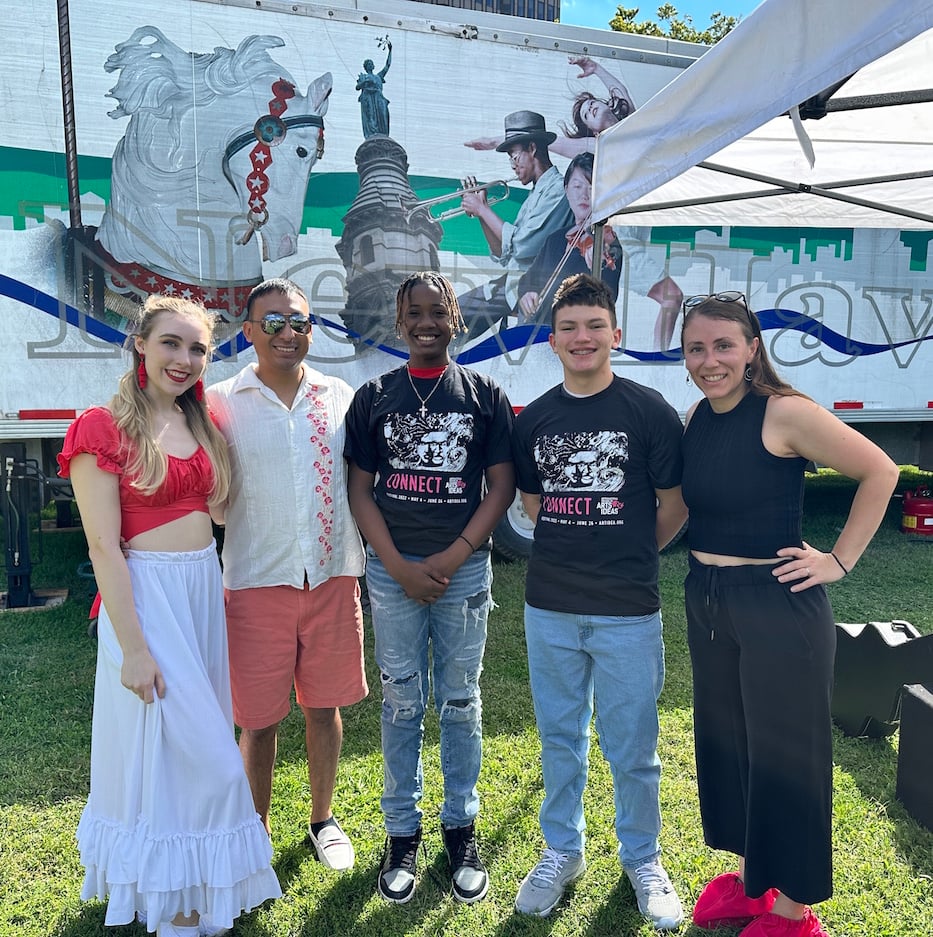
Top: Chen. Lucy Gellman Photo. Bottom: Amanda Duvall, Jason Ramos, BRAMS Students Rhyon Christie and Edward Mathews, and Alexis Robbins. Tavares Bussey Photo.
That changed after the turn of the century, Ramos said. In the first half of the 20th century, Dictator Rafael Trujillo pushed to make it the national dance of the Dominican Republic—but tried to craft it in his image in the process. As people fled his reign, the form made its way well beyond the island, across the Dominican diaspora.
“At the end of the day, merengue is now a critical component of the Dominican culture,” Ramos said.
That has allowed it to flower in new ways, he added. For instance, some merengue may be heavy on tambora and accordion, but it can also show up in remixes from Bad Bunny, Don Omar and Nío García. As they danced it out, Ramos and Duvall made it all about the hips. As they stepped front and back, arms constantly in motion, they carried centuries of tradition with them.
“This music is a music that derives from joy, from struggle, from trying to liberate yourself through dance,” Ramos said.
“Just have fun with it!” he added before flowing into Bad Bunny’s “Guayando.” The sun scattered across the grass, and he and Duvall kept moving.
To watch more from Thursday's performance, click on the videos above or check out the Arts Council's Instagram.

